‘My eyes have been opened:’ Inside Elton John’s personal photography collection
“Fragile Beauty” is an exhibition of extremes. The new show of “Photographs from the Sir Elton John and David Furnish Collection” at London’s Victoria & Albert museum (V&A) is at turns glitzy and gritty; joyfully pop and heart-wrenchingly poignant. On one hand it’s high-gloss portraits of Marilyn Monroe; on the other it’s the raw, intimate snapshots of Nan Goldin, a no-holds-barred ode to love and loss, sensuality and suffering.
“The title is key,” said exhibition co-curator Duncan Forbes. “‘Fragile Beauty’ was chosen by Elton. It’s something that runs like a silver thread through the whole show: the vulnerability that underpins the human condition.”
Since the 1990s, the British singer-songwriter and his filmmaker husband have amassed some 7,000 works. The result is “one of the great contemporary photography collections of our era”, writes V&A director Tristram Hunt in the exhibition catalogue. Previously shown in Atlanta in 2000, then at London’s Tate Modern in 2016, the collection’s latest outing features more than 300 images, ranging from midcentury up to the present day.
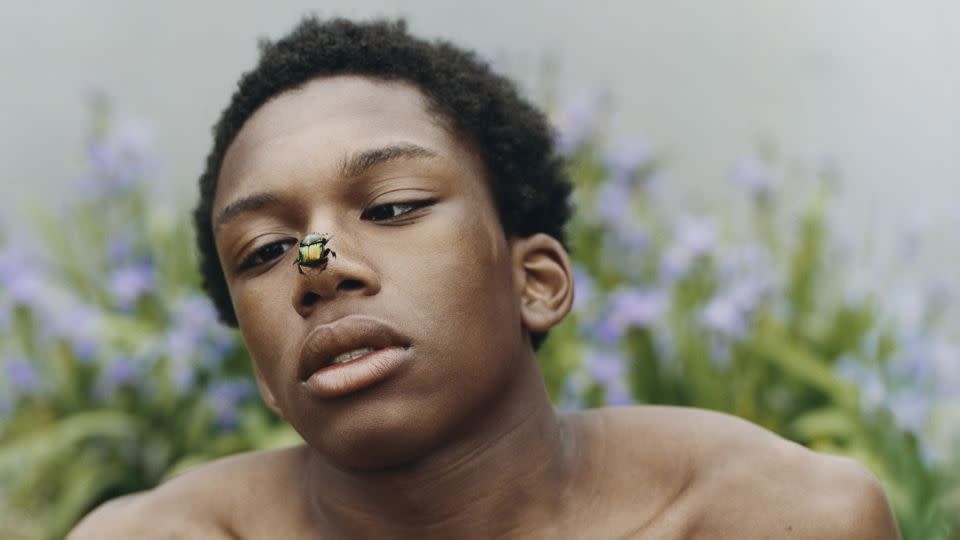
Among the earliest works is a 1955 Richard Avedon: the wildly fantastical “Dovima with Elephants”, part of a fashion shoot that first appeared in Harper’s Bazaar magazine and epitomizes his approach to photography as “a vacation from life.” The most contemporary piece on display, meanwhile, is from 2022; by 29-year-old American photographer Tyler Mitchell (best known for his Vogue cover of Beyoncé) and titled “Simply Fragile”, the delicate depiction of a boy with a beetle on his nose is part of what Mitchell has referred to as a “Black utopic vision”.
The show, however, is not chronological; instead it’s grouped into “chapters,” from “Fashion” and “Stars of Stage Screen and Studio” to “Reportage” and “Desire.” The themes arose from how John and Furnish live with the prints, rotated in salon-style displays across their homes — from London to Los Angeles. “Their LA house has these wonderful (William) Egglestons — all early dyed transfer prints, very rare, very sought after — on the wall of the dining room,” said Newell Harbin, director of The Sir Elton John and David Furnish Photography Collection, and a co-curator of “Fragile Beauty”. “Then you go into their Atlanta home and it has so many wonderful (Peter) Hujars.”
A collection that ‘speaks to’ Elton John
“We really began to construct this exhibition while sitting at Elton and David’s kitchen table,” confirmed Forbes. “This is a very personal collection. Some collections are built by art advisers; this is not a collection built by an art adviser. This is a collection passionately constructed by the two men that are in it.”
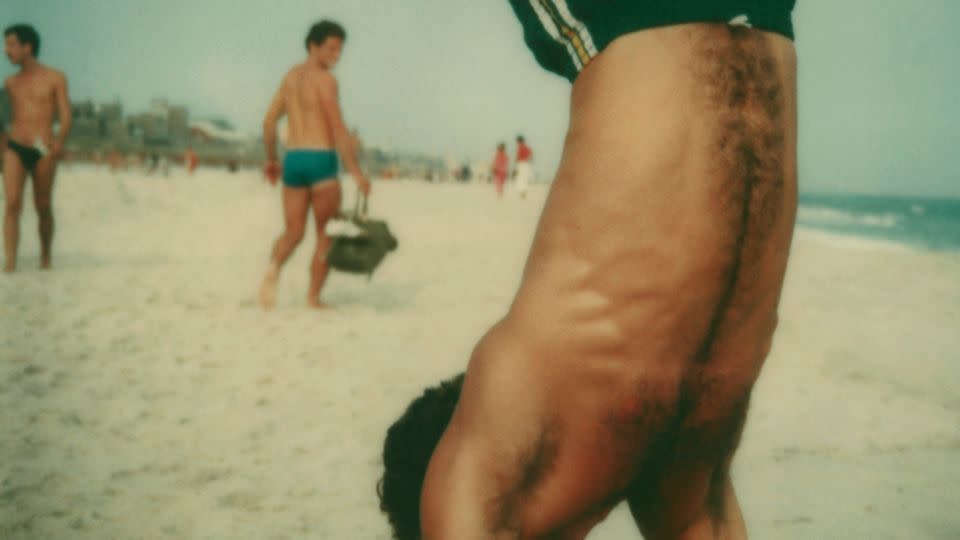
Working closely with John and Furnish since 2010, Harbin helps to build and shape the collection in a process of constant dialogue. Each piece “has to speak to them,” she said. “They’re not just after a big name or somebody who is making a splash right now in the art scene. It’s a rather organic process,” she said, highlighting a recent sale of some of their pieces at Christie’s and added; “We’re still bringing in new works all the time.” The latest addition is Avedon’s famous 1981 portrait of Ronald Fisher — a beekeeper shown with the insects crawling over his naked chest — featured in the “Fragile Beauty” show.
For Newell, one of the most powerful works in the exhibition is the last self-portrait of Robert Mapplethorpe. “It tells a very sad story about an artist that we lost way too soon to Aids,” she said of the stark image of the American photographer holding a skull-topped walking cane, his gaze intense and direct. Known for his portraits, sensual depictions of flowers (one of which graces the cover of the “Fragile Beauty” catalogue) and portrayals of New York’s BDSM gay bars, Mapplethorpe died in 1989 at the age of 42. Newell added: “It’s a great reminder of how their collection crosses over into their lives and all of the work they’ve done with the Elton John Aids Foundation.”
Across the exhibition, the display calls attention to both gay liberation — an image from Sunil Gupta’s series “Christopher Street”, for instance, captures gay visibility in 1970s New York — and queer artists, from American artist George Platt Lynes in the 1940s to contemporary South African artist Zanele Muholi, whose self-portraits emphasize Black queer visibility.
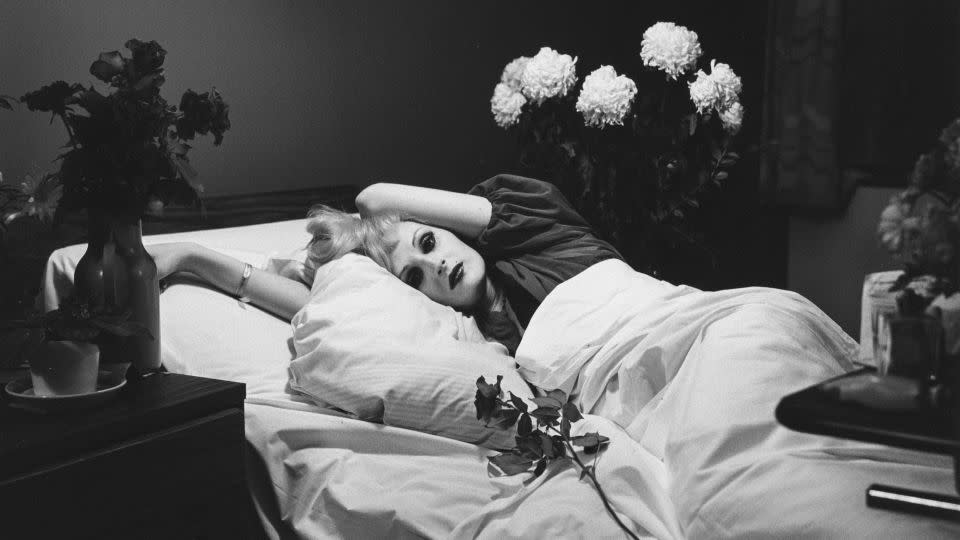
The room titled “Desire” is a joyful celebration of the male form, which encompasses Mel Roberts’ 1970s shots for beefcake magazine “The Young Physique”; Gilbert & George’s “Naked Body” (1991); Ryan McGinley’s raw and intimate “Having Sex”; and a trio of Don Herron’s “Tub Shots”, capturing pioneering queer artists Keith Haring, Robert Mapplethorpe and Peter Hujar while bathing.
Photography as a visual journal
One section, too, is titled “Fragile Beauty”, featuring work by Mapplethorpe, Hujar and McGinley. Among the work of documentary photographer Mary Ellen Mark, a portrait of a 14-year-old Seattle prostitute known as “Tiny” is particularly affecting, while the space centers on an encompassing floor-to-ceiling installation of Goldin’s 149-photo series “Thanksgiving.” Taken between 1973 and 1999, the images are a visual journal of the downtown New York art world and its debauchery, capturing Goldin’s own bruised and beaten face, the result of an abusive relationship, and the harrowing effects of drug addiction and Aids among her friends.
John’s own struggles with addiction have no-doubt informed his selection; it was after leaving rehab in 1990 that he began to collect photography. “He has told the story numerous times of seeing a print for the first time with fresh, sober eyes, and how impactful it was for him,” says Harbin, referring to a meeting with photography dealer David Fahey over lunch at a south-of-France chateau.
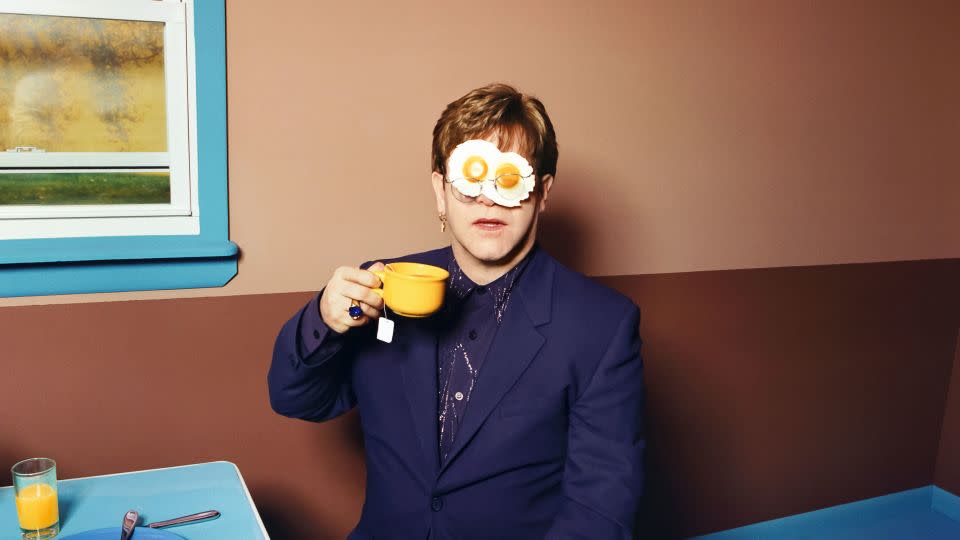
“I had just seen a collector in London so happened to have all these photographs with me,” recalled Fahey over Zoom. “It was suggested that I bring them out to show everyone… It was a fragile, delicate time for Elton and he responded emotionally to the pictures he was looking at,” of how John became enamored with the work of 20th-century fashion photographers such as Irving Penn, Herb Ritts and Horst P. Horst. “He selected about 10 pictures and then walked over and gave half of them to our host. It was a demonstration of his gift-giving abilities, and his need to share photographs with people.”
In an inscription to Fahey in the catalogue to John’s 2000 Atlanta exhibition, the singer notes the importance of their initial encounter; “otherwise my ignorance about photography and all its beauty would probably still be inside of me. Instead, my eyes have been opened to the most visual stirring world,” he wrote.
“He’s an obsessive collector,” added Fahey, noting John’s dramatic shift in focus from “striking, beautiful objects” into “hardcore documentary and photojournalism”.
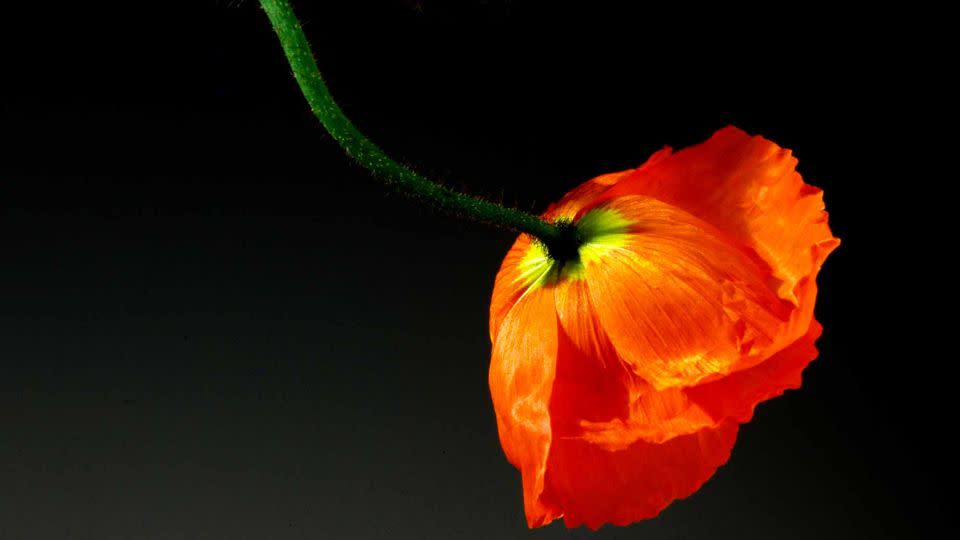
At the V&A, the “Reportage” section is startling. “It’s grounded in photography from the American civil rights movement,” explained Forbes, who highlighted a piece by New York-based, African American artist Roy DeCarava as “one of the most beautiful photographs I’ve ever seen in my life. His work has hardly ever been shown in Britain.” Other images are instantly recognizable, such as Associated Press photographer Julio Cortez’s viral image of a protester in Minneapolis in May 2020, following the murder of George Floyd.
The scope is at times overwhelming, but as Hunt concludes: “There is a richness and drama and beauty and tragedy in this exhibition, the emotional intensity of which I have rarely witnessed in a photography show.”
“Fragile Beauty: Photographs from the Sir Elton John and David Furnish Collection,” is on at the Victoria & Albert Museum, London, until January 5. 2025.
For more CNN news and newsletters create an account at CNN.com


